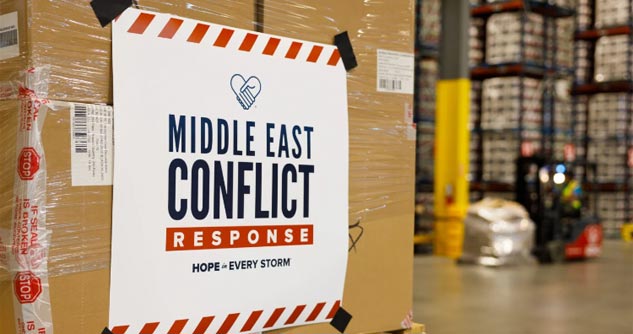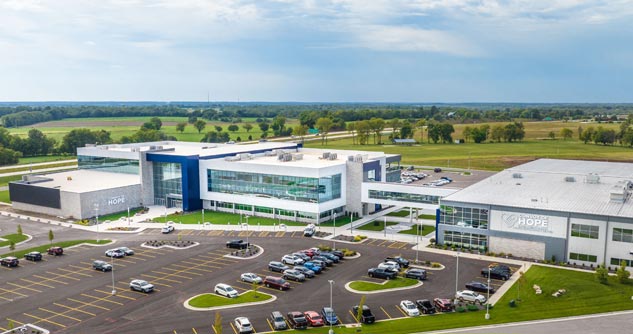(Air1 Closer Look) – Disasters happen – but Convoy of Hope meets trouble quickly with tangible comfort and care. In August, they rushed to aid 7,000 people displaced in West Maui. “We had team members on the ground there within a couple of days of that horrific wildfire,” confirms Ethan Forhetz, VP of Public Engagement for the Christ-centered relief ministry. Famous for its band of 18-wheelers, the vast ocean between the mainland U.S. and Hawaii was no barrier. “We shipped many things over by boat, we also shipped some things over by airplane,” he explains, thanks to Convoy’s established international partnerships.
Convoy provided basics like food, water and hygiene kits but also two-way radios and solar-powered battery boxes to charge fans and cellphones. “Some zones are opening after the decontamination of that area – so they can get in and literally sift through their belongings – so part of what we’re doing now is providing sifters.” The ministry is also working to fund a community of tiny houses for Lahaina residents who lost everything in the 5th deadliest wildfire in the country. “The tiny houses are free to them, there’s no charge for people to live in those houses, so we found that’s a good way to give people a sense of normalcy again.”
The work continues, but good news arrived from the Maui Visitor and Convention Bureau. Maui reopened for business and tourists on November 1st. The island is eager to say ‘Aloha’ to mainlanders says Leanne Pletcher, Dir of PR and Marketing. “The Maui economy depends on tourism,” she explains, and while the historic town of Lahaina remains closed, she invites newlyweds, adventure hikers and surfers to come enjoy the sunset from Maui’s many other beautiful coasts.
Hear our Closer Look conversation with Leanne about #Maui Open:
Meanwhile, recovery remains slow for other areas of the world where Convoy continues to partner with local churches to meet basic needs. Tornadoes and hurricanes struck Mississippi and Florida in 2023, and work continues in Turkey and Syria after twin earthquakes left millions of homes in rubble. Years of drought in the Horn of Africa causes millions of people to suffer hunger. War in Ukraine rages on, and Convoy continues to provide basic food and water to refugees.
More recently, the Hamas attack on Israel triggered an immediate response from Convoy, about which Ethan says they ‘can’t say much,’ in order to protect their local partners; but a 40-thousand pounds of food was quickly delivered to the area by cargo plane.

Whether providing sifters for people in Lahaina looking through ashes of their home, bringing donkeys to Moroccans who need transportation or bottles of water to refugees from Ukraine or Gaza, Convoy positions itself to go headlong into disaster. Headquartered in Springfield, MO, the organization recently opened its first-ever regional distribution warehouse strategically located in Sacramento, California. The 70,000 sq ft. location puts vital supplies and equipment closer to West coast disaster areas.
For “the next one, we’re looking at the Southeast, since we’re down there a lot for hurricanes,” says Forhetz, mentioning Atlanta as a possible site. “That’s a plan that Convoy’s had, it’s been a dream for a long time -- and it just allows us to store more goods so we can respond better and more quickly when something happens.”



